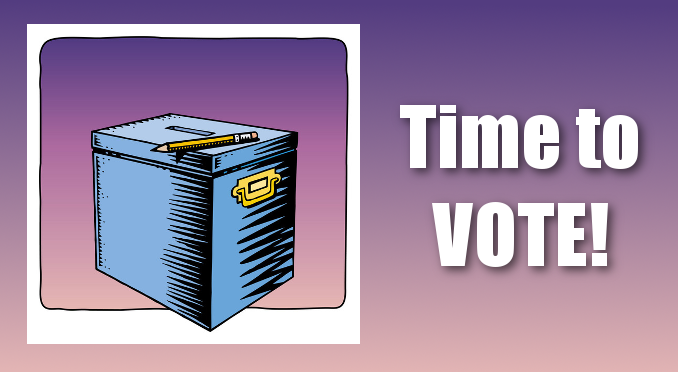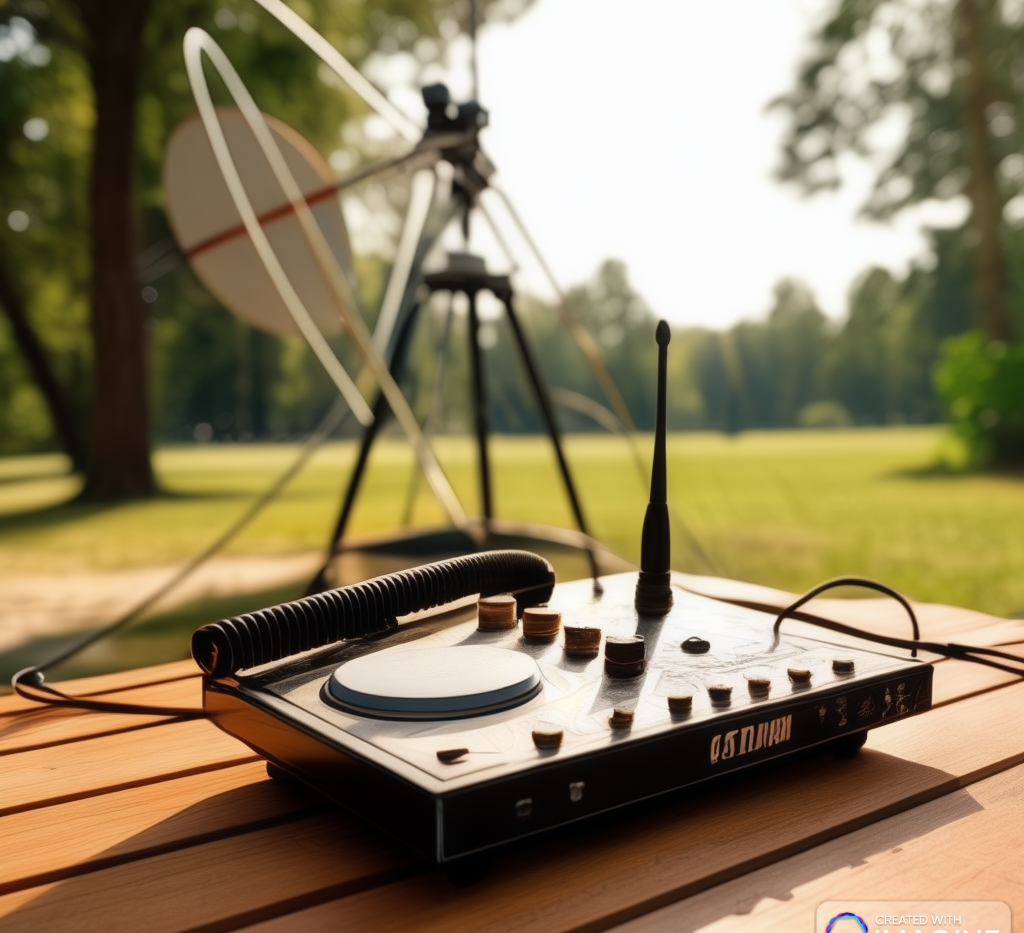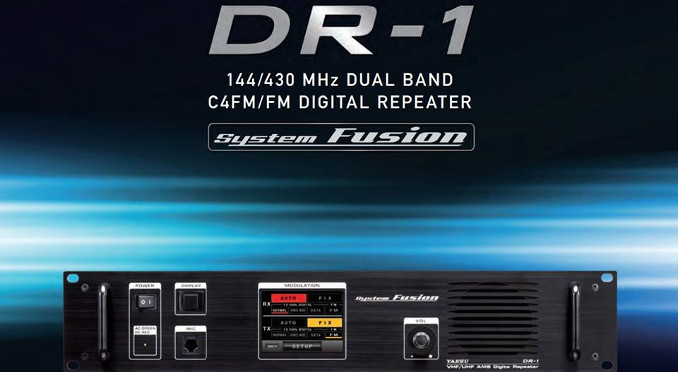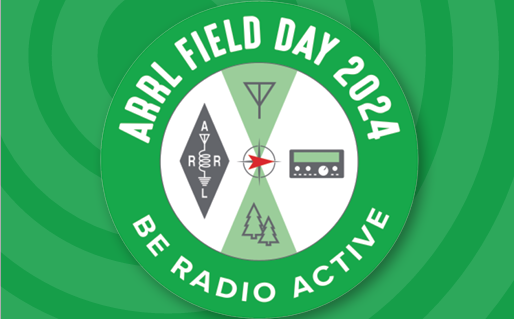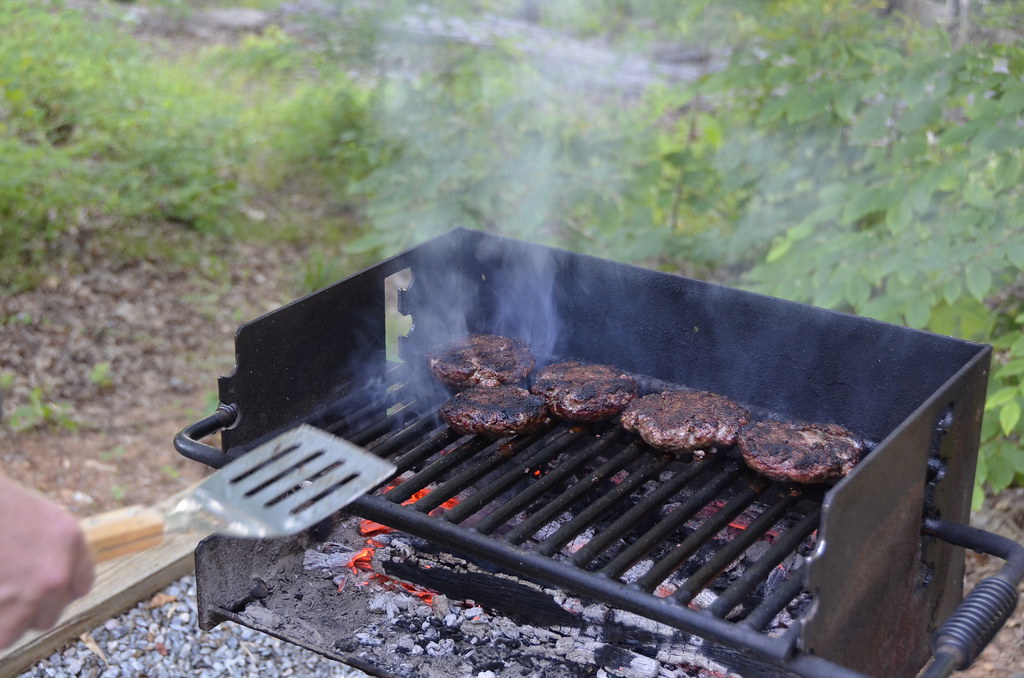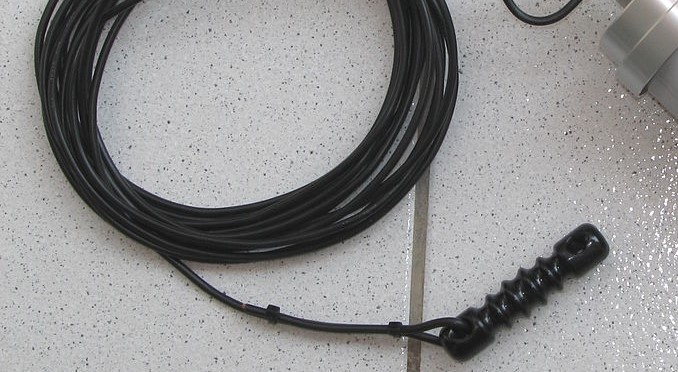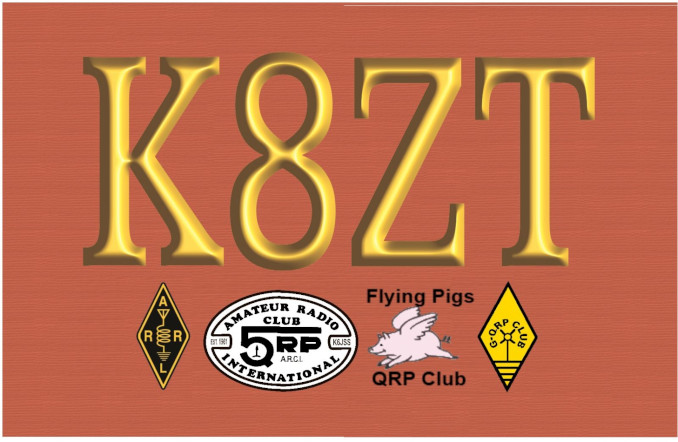Comparing duplexers, MFJ vs. Diamond
Homepage › Forums › Technical Discussions › Comparing duplexers, MFJ vs. Diamond
- This topic has 4 replies, 1 voice, and was last updated 9 years, 4 months ago by
 Cameron Conover.
Cameron Conover.
-
AuthorPosts
-
-
December 7, 2015 at 7:14 am #1075
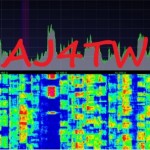 Cameron ConoverModerator
Cameron ConoverModeratorI put up a new Diamond X200A antenna on my chimney and I wanted to share it between a Dstar hotspot on UHF and My Icom 746 on 2m, in order to do that I needed to use a diplexer. I used to use a duplexer in my mobile, so I had two laying around.
The first one was the Diamond MX-72.
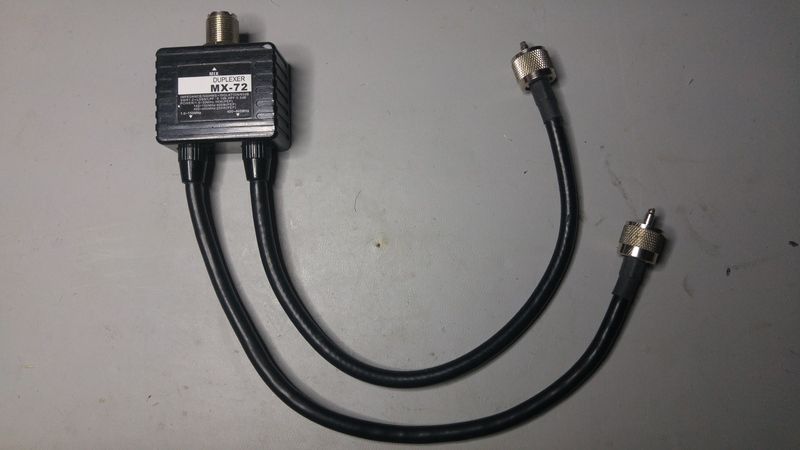
Inside this one I found two cold solder joints, it was used in my collection and I remember having it installed in my car and then removing it because it caused a problem. Before I could even test the Diamond MX-72 I had to repair the cold solder joints. Strike one.
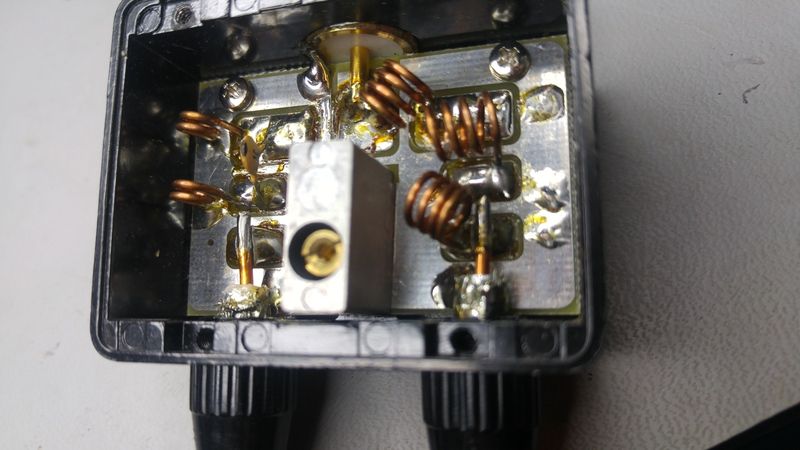
The second one is the MFJ-916B:
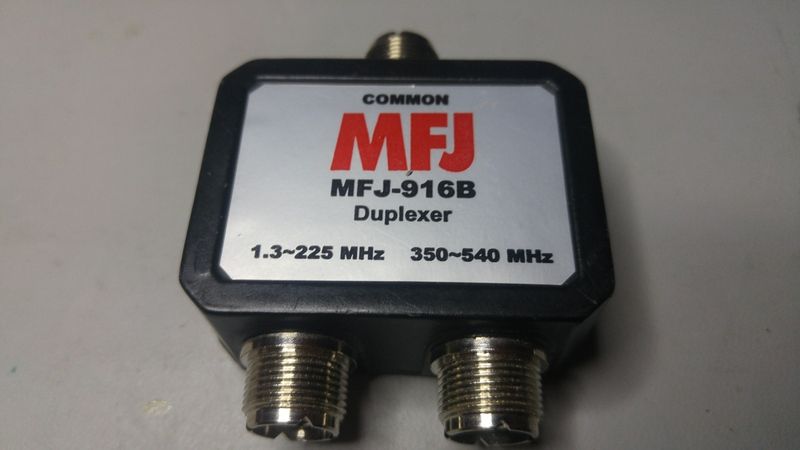
Basically I just wanted to test these to see which one was more efficient in terms of out of band reject and insertion loss, after looking at them I decided I liked the way one filter worked better than the other as well.
-
This topic was modified 9 years, 4 months ago by
 Cameron Conover.
Cameron Conover.
-
This topic was modified 9 years, 4 months ago by
-
December 7, 2015 at 7:37 am #1077
 Cameron ConoverModerator
Cameron ConoverModeratorThe first thing I did with these was to use a signal generator and spectrum analyzer to sweep through the filters and with max-hold record the amplitude of the signal to make it through each of the filters. That’s basically all these things really are, a Low pass filter that the 2m side passes through and a High Pass filter designed for the UHF side to pass while rejecting the VHF signals.
Here is what the sweep of the Diamonds LPF(low pass filter) looks like:
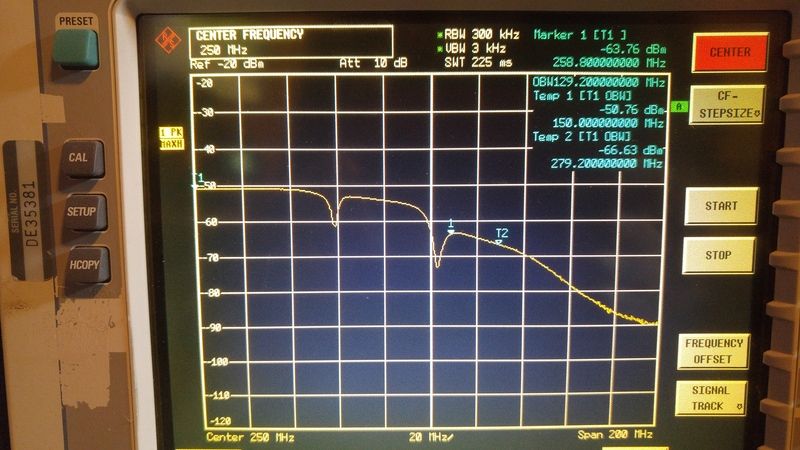
This is a 200Mhz wide sweep centered on 250Mhz, the filter in the diamond starts rolling off around 190Mhz and doesn’t really reach full attenuation until almost 350Mhz. Not a very sharp Filter at all.And the HPF from the Diamond:
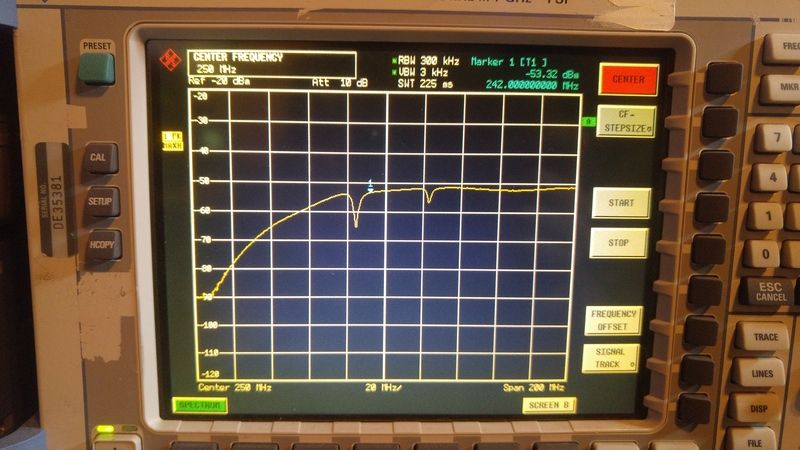
A little bit Sharper but still a nice lazy roll down to full attenuation.
If you overlapped these two filters traces you’d just see a flat line across the sweep. I was sweeping with a -50dBm signal from 150Mhz to 350Mhz:
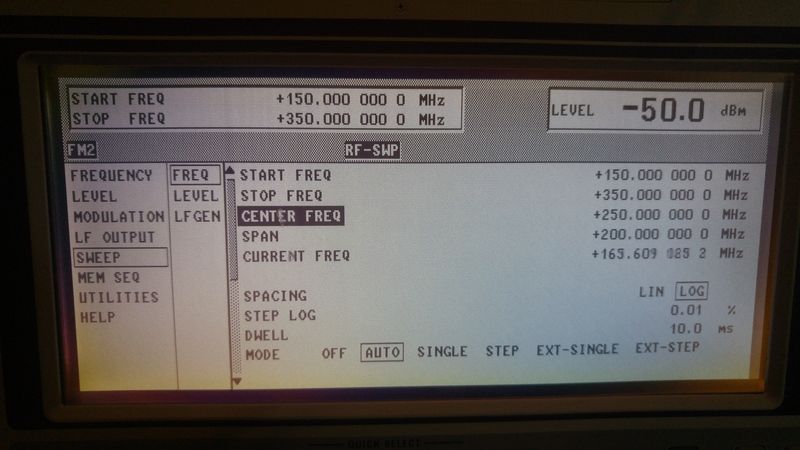
-
This reply was modified 9 years, 4 months ago by
 Cameron Conover.
Cameron Conover.
-
This reply was modified 9 years, 4 months ago by
-
December 7, 2015 at 7:50 am #1078
 Cameron ConoverModerator
Cameron ConoverModeratorHere is the same sweep test through the MFJ-916B
LPF:

Now that’s refreshing, this filter gets it’s job done in less than half the bandwidth of the Diamond one. 3dB rolloff is around 220Mhz, looks nice and sharp.
MFJ HPF:
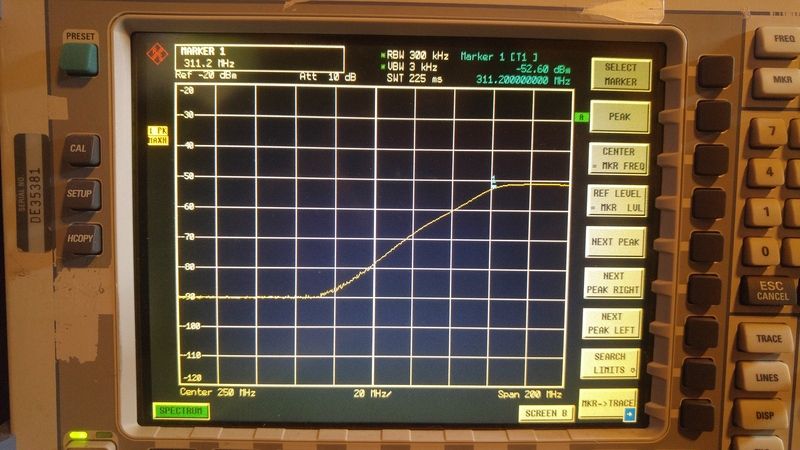
3dB rolloff around 311 MhzHot DOG! At this point I get somewhat excited, it’s going to be really nice looking when I overlap the two filter sweeps. Check it out.

Beauty!
-
December 7, 2015 at 8:08 am #1079
 Cameron ConoverModerator
Cameron ConoverModeratorThe next thing I wanted to check out is the actual out of band attenuation of each. For this I used an S12 test on a network analyzer. Unfortunately this network analyzer only goes up to 200Mhz so I can only test reject on the UHF side by sweeping RF in the 2m band through the UHF side of the duplexer. First up is the reject on the diamond MX-72:
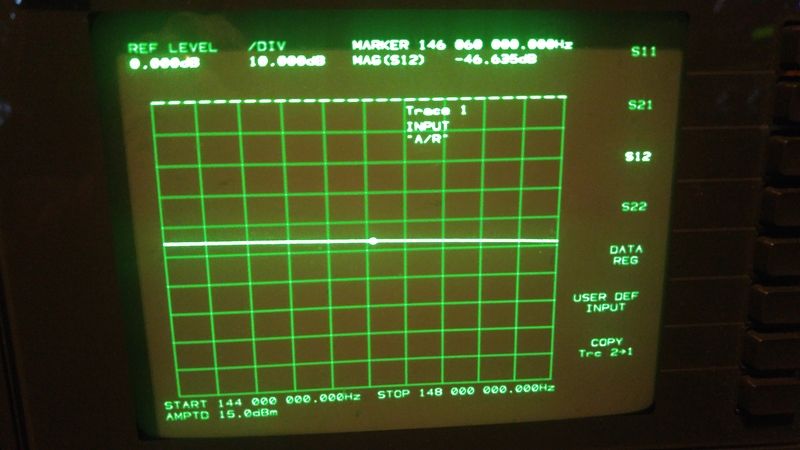
What you see here is the amount of VHF signal that is passing through the UHF side of the duplexer, the attenuation is around -46dB Not bad really, that’s passable. I also checked the insertion loss, which turned out to be less than 1dB, around 0.8dB, which is pretty darn good.
Now let’s have a look at that MFJ-916B:
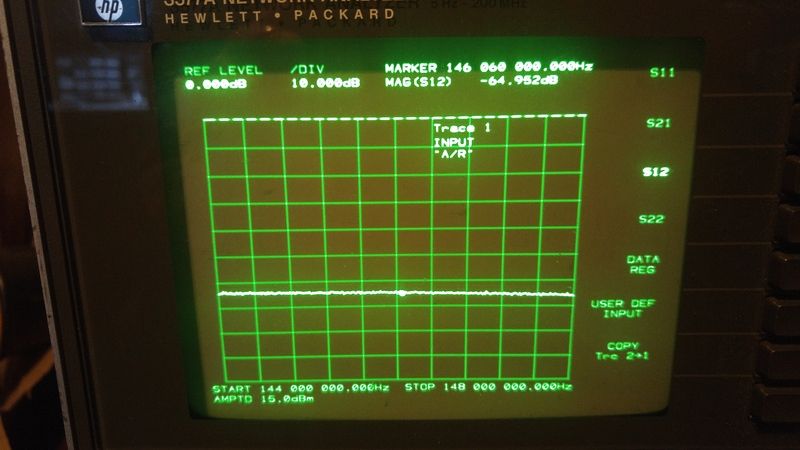
65 dB of attenuation! That’s almost a full 20dB better! Wow, now that’s a BIG improvement.
Insertion loss is almost exactly the same between the two at about 0.8dB less than 1dB insertion loss. -
December 7, 2015 at 8:17 am #1080
 Cameron ConoverModerator
Cameron ConoverModeratorSummary
I’d say both of these duplexers are useable, they’d both do the job acceptably. Remember that the Diamond was broken, after just a few weeks in service I had to take it out of service because of broken solder joints. I had to repair those solder joints in order to do these tests.
Even though both of these are useable there is a clear winner here based on these tests. The MFJ-916B basically mopped the floor with the diamond competition with 20dB Better reject. Not to mention the much cleaner looking, sharper filters. The filters appear to have actually been tuned instead of just slapped together and accepted as “good enough”
I had a lot of fun doing this testing, and now, I’ll put this MFJ duplexer into service on my new antenna knowing that it’s going to do a good job for me keeping my UHF Dstar Hotspot and my 2m radio from causing problems with each other.
Let me know if you have any suggestions for further testing methods, or if you have any questions. If anyone here has anything they’d like to test, let me know, I have a lot of fun doing this type of stuff.
This time Mississippi’s Finest Junk beats Diamond’s hands down.
73,
AJ4TW
-
-
AuthorPosts
- You must be logged in to reply to this topic.


